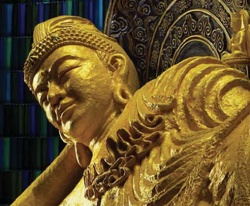Difference between revisions of "Uruvelā"
Jump to navigation
Jump to search
m (Text replacement - "S" to "S") |
|||
| Line 7: | Line 7: | ||
Today the town that has grown up on the site of [[Uruvelā]] is called [[Bodh Gayā]]. | Today the town that has grown up on the site of [[Uruvelā]] is called [[Bodh Gayā]]. | ||
| − | [[Navel of the Earth]] -The History and Significance of [[Bodh Gaya]], | + | [[Navel of the Earth]] -The History and Significance of [[Bodh Gaya]], S. [[Dhammika]], 1996. |
</poem> | </poem> | ||
{{R}} | {{R}} | ||
Latest revision as of 07:29, 31 January 2015
Uruvelā was a small village in northern India on the outskirts of which the Buddha attained enlightenment. The Buddha described the village and its surroundings as ‘a beautiful stretch of ground, a lovely woodland grove, a clear flowing river with a beautiful ford, a village nearby for support ... a suitable place for making an effort’ (M.I,167).
In later centuries the village grew into a center of Buddhist scholarship and pilgrimage and was known variously as Sambodhi, Mahābodhi or Vajrāsana.
Today the town that has grown up on the site of Uruvelā is called Bodh Gayā.
Navel of the Earth -The History and Significance of Bodh Gaya, S. Dhammika, 1996.
